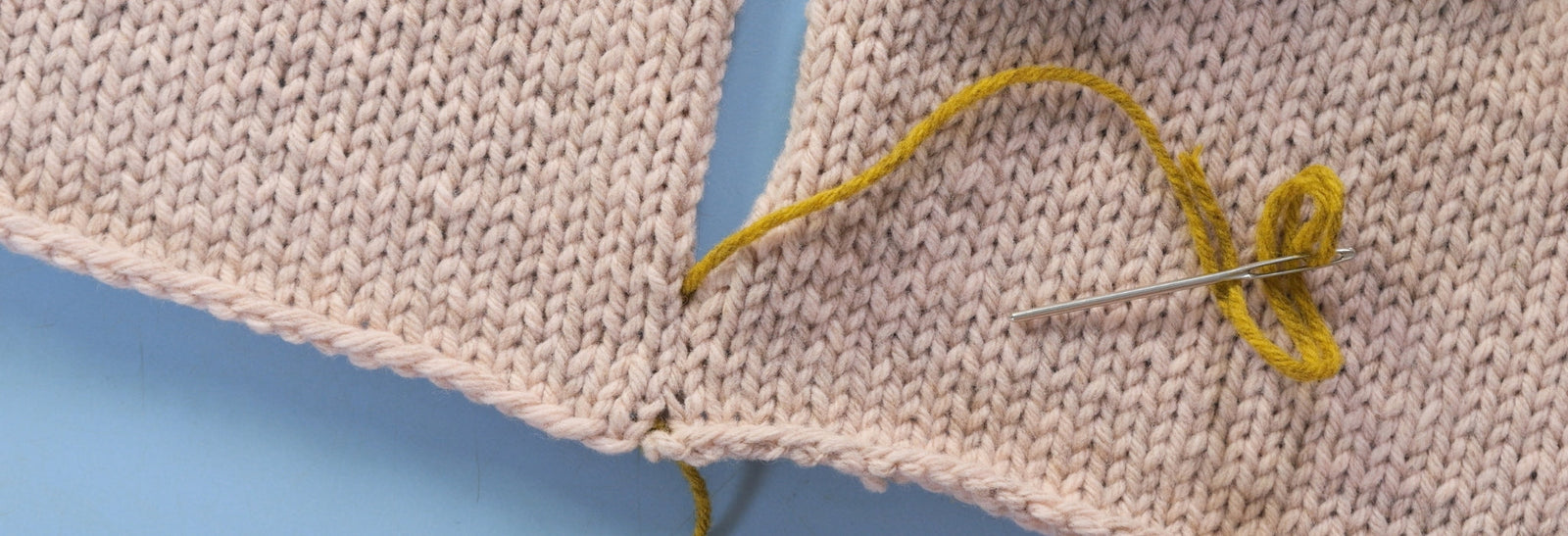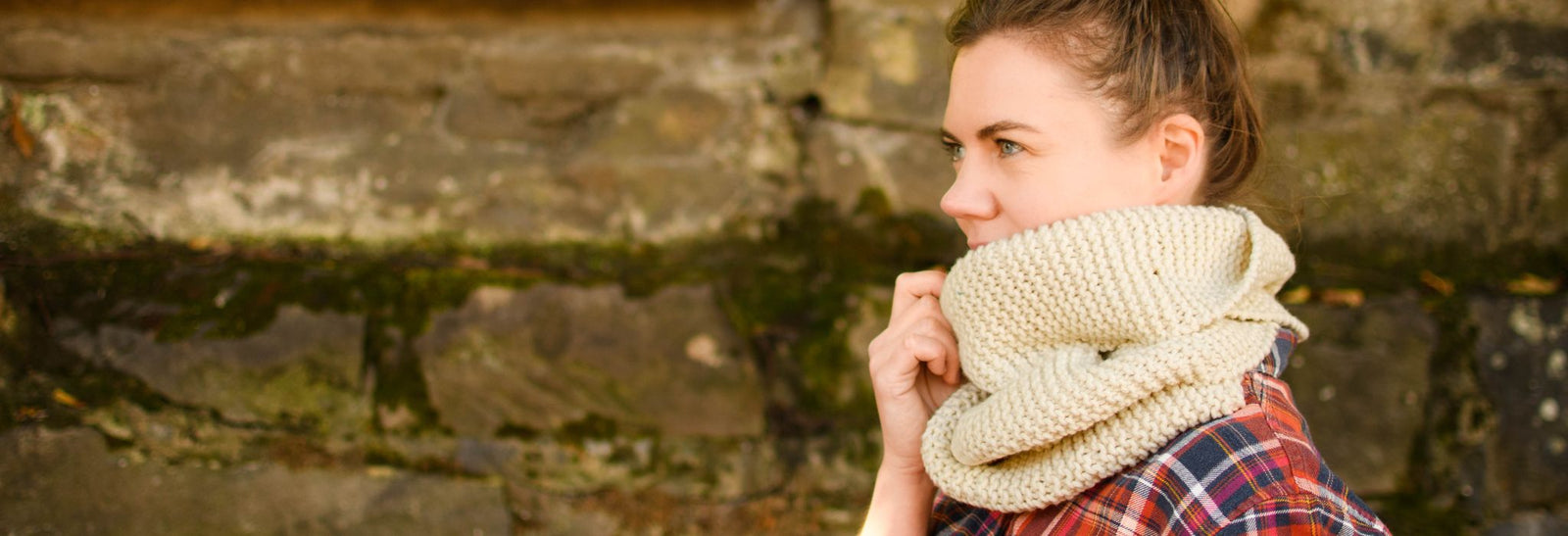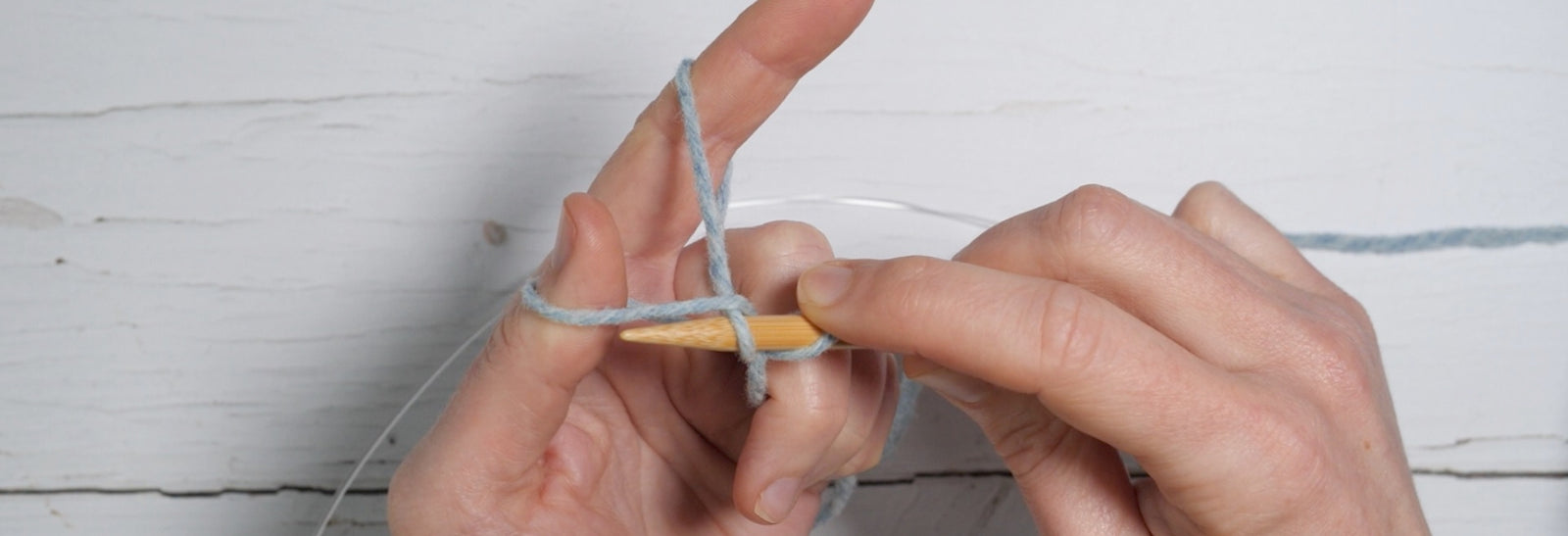Your Cart is Empty

Help! Where am I in my knitting project?
January 08, 2021

Whether you put it down a week ago or months ago, nearly everyone has a few abandoned knitting projects. Maybe you got bored, or another project took priority (hello gift knitting). How do you figure out where you left off when you get back to it? Here are a few tips for how to find your place in an abandoned knitting project, and how to make things easier on yourself for next time! Being able to read your knitting is a great help too when picking up an abandoned project, and you can read more about learning this important skill here.
The Pattern

First things first: Do you know what pattern it is? If you can’t remember, try browsing your past social media posts or your Ravelry notebook or queue. Narrow it down by asking, what type of project is it (hat, sweater)? Are there multiple colours or stitch patterns?
It’s a good idea to keep records of projects you’ve started in a way that works for you. This might be a Ravelry project page, a dedicated notebook, or just a photo of the project and pattern on your smartphone. You might think you’ll remember, but it never hurts to write it down. This also applies to working the pattern itself - mark the size you’re knitting, check off sections you’ve completed, and take note of adjustments you’ve made. (You can also do this on digital patterns with PDF markup apps.)
Keeping printed patterns together with their projects in a project bag is also a great way to make sure you know what it is when you come back to it.
Once you’ve figured out what pattern you’re working with, it’s time to figure out where you are within it. (If you can’t figure out what pattern you were knitting, it might be time for a new project!)
Where am I?
Depending on the type of project you’re knitting, there should be some visible clues that will help you figure out what row you’re on.
Right Side or Wrong Side?

Will your next row be a right side row or a wrong side row? Or are both sides the same? With the right side of the project facing you look at which edge the yarn is attached to. If it’s on the left, you’d just completed a right side row, if it’s on the right, you’d just finished a wrong side row.

If you’re in the middle of a row, is the yarn attached to the left or right needle tip? If, with the right side facing it’s on the left, you’re in the middle of a wrong side row and need to flip your work over.
Counting

Count the number of stitches and see if it corresponds clearly to a row in the pattern. For something like a shawl or raglan sweater where the stitch count changes almost every row, counting stitches might be enough to get you on track.
For other projects, counting the number of rows might be more helpful. You can count from the cast on or another landmark (such as an increase or decrease row, or a cable cross row), and work through the pattern’s rows from there.
Increases and Decreases

Are there increases or decreases in the pattern? Look closely to identify increases and decreases, perhaps placing stitch markers on them so you don’t lose track. Increases and decreases are most often worked on the right side of the piece.
Cast ons and bind offs are also easy to identify and can give you another landmark to figure out where you could be in the pattern.
Stitch Patterns and Charts
Is there a stitch pattern or chart with numbered rows?
If you’ve been working from charts or a stitch pattern, chances are you’ve done something to mark off completed rows (checkmarks on the pattern, tally markers, or a row counter. )

Compare the last row of your knitting on the needles against the chart or stitch pattern to see if it matches the row you’ve marked. If it doesn’t, check a row up or down - you might have worked another row without marking it off, before you put it down.
Give it a Go

Nothing left but to try the next row. Make sure to mark where you are now and what row you are trying! If the row doesn't work out, you’ll know you’ve missed something - but hopefully you’ve learned a few tricks to help you decode your knitting.
Projects featured in this post include the Ravelston sweater, the Willowbank Shawl, the Polwarth sweater and the Rakkaus Socks.
Further Help Looking for more tips and tricks?
Our website is full of tutorials whether you're looking to knit your first sweater, get started with colourwork, or try a new technique.

Also in Journal

Learn to Knit: Mattress Stitch
March 29, 2023
By following our step-by-step mattress stitch knitting tutorial, you'll learn how to make your seams look beautiful and how best to prepare your knitting so that when you seam it with mattress stitch, it goes smoothly on the first try.
Read More
How to Knit a Scarf: A Beginners Guide to Scarf Knitting
March 23, 2023
Want a quick and easy beginners tutorial on how to knit a scarf? This garter stitch scarf is easy to knit and requires just 3 skills; casting on, the knit stitch and casting off.
Read More
Learn to knit: the long tail cast-on
February 03, 2022
The long tail cast on is a great multi-purpose knitting cast on and the perfect place for beginner knitters to start. Learn how to work the long tail cast on and how to estimate the length of yarn needed with our clear step by step tutorial and video.
Read More Recent Articles
- Learn to Knit: Mattress Stitch March 29, 2023
- How to Knit a Scarf: A Beginners Guide to Scarf Knitting March 23, 2023
- Learn to knit: the long tail cast-on February 03, 2022
- How to Kitchener Stitch December 09, 2021
- Crochet Provisional Cast-on December 02, 2021
- Learn to knit: How to knit in the round with double pointed needles November 25, 2021
- Learn to knit: How to knit in the round using the magic loop technique November 25, 2021
- Learn to knit: How to knit in the round November 25, 2021
- Knitted Gift Ideas for you and your loved ones November 18, 2021
- Celebrating our Porty Hat Preview Knitters October 28, 2021
Free resources
-
KALS, step-by-step pattern guides and free patterns
Learn brioche with the free Daniel's Hat pattern
Tombreck - a free chevron beanie pattern
Working the brioche neck detail on the Polwarth sweater
Basics
Casting on
Decorative Channel Island Cast-on
Binding off
3 Easy Stretchy Bind-offs (p2tog bind-off; k2togtbl, k1 bind-off; Jeny's surprisingly stretchy bind-off)
Tubular Bind-off for brioche stitch
Increasing
Paired increase methods compared
Decreasing
Brioche stitch double decreases
Knitting in the round
How to Knit in the round using Magic Loop
How to Knit in the round using DPNs
Short rows
Swatching and gauge
Tips and tricks
Avoiding ears when binding off
Tighter purl stitches for neater cables and ribbing
Cabling without a cable needle
Reading knitting patterns
Understanding "continue in pattern"
Finishing
Garment knitting
Joining the body and sleeves on a seamless bottom up sweater
Sizing
Inclusive garment knitting
How to pick a garment without a model for you (specifically addresses finding garment patterns when your gender identity isn't represented and the styles you want to knit might not be sized to fit your body)
How does ease affect inclusive size ranges?
Specific stitch patterns
Lace
Identifying and fixing mistakes in lace knitting
Colourwork
Getting started with stranded colourwork
Understanding colour dominance
Working stranded colourwork over small circumferences
Decreases in stranded colourwork
Holding the yarn for stranded colourwork
Ladderback Jacquard (a neat way to deal with long floats)
Cables
Cabling without a cable needle
Cabling without a cable needle on the wrong side
How to knit cabled decreases
Closed ring cable increases and decreasesBrioche
How to work brioche stitch in the round
Other crafts
Cross stitch
How to begin your first large cross stitch project
How to finish a cross stitch project with an embroidery hoop frame
Mending

Sign up today
Find out the latest news from the studio such as sales, pattern releases, and new workshops or KALs our learning community, The Knitwork. We also share helpful tips and exclusive subscriber discounts...

